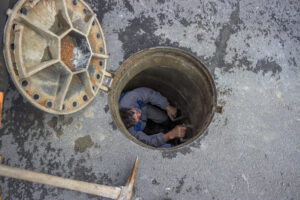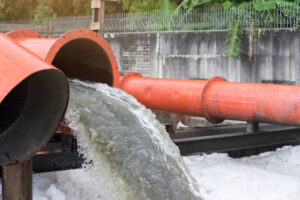Sewage cleanup is a crucial and often overlooked aspect of property maintenance and disaster recovery. Understanding what sewer cleanup entails, how to effectively clean sewage, what tools and materials to use, and the concept of sewage backup is essential for homeowners and property managers.

In this comprehensive guide, we’ll answer these questions and shed light on the importance of proper sewage cleanup.
What Is the Meaning of Sewer Cleanup?
Sewer cleanup, also known as sewage cleanup, refers to the process of safely and efficiently removing, cleaning and restoring areas affected by sewage spills, overflows, or backups. It involves addressing not only the visible contamination but also potential hidden damage within walls, floors, and structural components.
How Do You Clean Sewage?
Cleaning sewage is a complex and hazardous task that should be handled by professionals whenever possible. However, if you’re facing a minor incident, here are general steps to follow:
1. Safety First:
- Put on personal protective equipment (PPE), including gloves, goggles, and a mask, to minimize contact with contaminants.
2. Stop the Source:
- If the sewage issue is ongoing, stop it at the source by turning off the water supply or addressing the blockage causing the backup.
3. Ventilation:
- Ensure proper ventilation by opening windows and doors to reduce indoor air pollution.
4. Remove Excess Water:
- Use a wet/dry vacuum or pumps to extract standing water and sewage.
5. Cleanup and Disposal:
- Dispose of contaminated materials, including carpets, insulation, and drywall, following local regulations.
- Clean affected surfaces with a disinfectant or a mixture of water and bleach (one cup of bleach per gallon of water).
6. Dry and Dehumidify:
- Use fans and dehumidifiers to thoroughly dry the area, preventing mold growth.
7. Inspect for Damage:
- Inspect structural elements for damage and arrange for repairs if necessary.
8. Professional Assessment:
- Consider hiring a professional sewage cleanup service for extensive or hazardous situations.
What Can I Use for Sewage Cleanup?
For sewage cleanup, you’ll need a range of cleaning supplies and equipment to ensure effective decontamination and restoration. Here’s a list of items commonly used:
- Personal Protective Equipment (PPE): Gloves, goggles, masks, and protective clothing.
- Wet/Dry Vacuum or Pumps: For water and sewage extraction.
- Disinfectants: Commercial disinfectants or a bleach-water mixture (1 cup of bleach per gallon of water).
- Trash Bags: To dispose of contaminated materials.
- Fans and Dehumidifiers: For drying the area.
- Buckets and Mops: For cleaning surfaces.
- Plastic Sheeting: To isolate contaminated areas and prevent further spread.
- Towels and Rags: For wiping and cleaning.
- Replacement Materials: Carpets, drywall, insulation, etc., for items that cannot be cleaned and salvaged.
What Is Sewage Backup?
Sewage backup occurs when wastewater, including human waste and wastewater from sinks, toilets, and drains, flows back into your property instead of being properly disposed of through the sewer system. This can happen due to various reasons, including blockages, damaged pipes, or heavy rainfall overwhelming the sewage system. Sewage backup poses significant health hazards and can cause extensive property damage if not addressed promptly.

In conclusion, sewage cleanup is a critical process that involves safely removing and decontaminating areas affected by sewage spills and backups. It requires the use of appropriate safety measures, cleaning supplies, and equipment. When facing sewage cleanup, always prioritize safety and consider seeking professional assistance for more significant or hazardous incidents. By understanding the importance of sewage cleanup and taking the necessary steps, you can protect your property and the health of its occupants.
Learn more at Wiki as well.